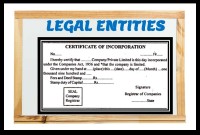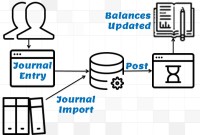- Home
- Business Processes
- Industry Knowledge
- Aerospace Industry
- Automotive Industry
- Banking Domain
- BFSI Industry
- Consumer/ FMCG Industry
- Chemicals Industry
- Engineering & Construction
- Energy Industry
- Education Domain
- Finance Domain
- Hospitality Domain
- Healthcare Industry
- Insurance Domain
- Retail Industry
- Travel and Tourism Domain
- Telecom Industry
- Leadership Skills
- eLearning
- Home
- Functional
- General Ledger (Record to Report)
- GL - Different Accounting Methods
GL - Different Accounting Methods
The accounting method refers to the rules a company follows in reporting revenues and expenses. Understand the two common systems of bookkeeping, single, and double-entry accounting systems. Learners will also understand the two most common accounting methods; cash and accrual methods of accounting and the advantages and disadvantages of using them.
Accounting Methods: Cash V/s Accrual:
Two types of accounting methods are commonly used to record business transactions know as cash accounting and accrual accounting. Under the cash accounting method, revenue is recognized and recorded when the cash is received and expenses are recognized and recorded when the cash payments are made. Under the accrual method of accounting, revenue and expenses are recognized and recorded, when the product or service is actually sold to customers or received from suppliers, generally before they're paid for.
While many small businesses and generally the professionals and professional organizations, use the cash method of accounting, but most businesses tend to use the accrual method. Typically, the single-entry bookkeeping system is used along with the cash method, while the double-entry system can be used with both the cash and accrual methods. The most common combination is double-entry bookkeeping and the accrual method.
Accounting Systems: Single Entry and Double Entry:
There are two common systems of bookkeeping single entry and double-entry accounting systems. The first – single entry – is simplistic, recording each transaction only once, either as revenue or as an expense. Single entry bookkeeping is suitable for organizations that have very few transactions, very few or negligible assets, and liabilities. But when you need a more sophisticated bookkeeping system double-entry bookkeeping system provides you with the tools necessary to represent your accounting data in a meaningful way for use by the stakeholders. Double-entry bookkeeping has become the standard, and is the preferred way of accounting, as it allows businesses to track both the sources and application of money.
Accounting System 1: Single Entry Accounting System:
A single-entry bookkeeping system or single-entry accounting system is a method of bookkeeping relying on a one-sided accounting entry to maintain financial information, based on the income statement (profit or loss statement). The system records the flow of income and expenses through the use of, daily summary of cash receipts and disbursements. The single-entry bookkeeping method records entries once and does not "balance" the transaction out by recording an opposing credit or debit.
A single-entry system may consist only of transactions posted in a notebook, daybook, or journal. However, it may include a complete set of journals and a ledger providing accounts for all important items. A single-entry system for a small business might include a business checkbook, check disbursements journal or register, daily/monthly summaries of cash receipts, a depreciation schedule, employee wages records, and ledgers showing debtor and creditor balances."
Under the method, the intent is to record the bare-essential transactions. In some cases, only records of cash, accounts receivable, accounts payable, and taxes paid may be maintained. Records of assets, inventory, expenses, revenues, and other elements usually considered essential in an accounting system may not be kept, except in memorandum form. Single-entry systems are usually inadequate except where operations are especially simple and the volume of activity is low. Single-entry systems are used in the interest of simplicity. They are usually less expensive to maintain than double-entry systems.
Accounting System 2: Double Entry Accounting System:
Double-entry accounting is a system of organization that records financial transactions in an efficient manner and has been used by accountants for over 500 years. Since the fifteenth century, when Luca Pacioli first wrote about the practice, the term "accounting" has referred to double-entry accounting. Double-entry accounting uses a system of accounts to categorize transactions. Each transaction that is entered consists of one or more debits and credits and the total debits must equal the total credits.
The double-entry bookkeeping system assumes that when a transaction takes place, it impacts two different accounts, one as a debit and the other as a credit. Therefore each transaction is recorded twice. A transaction may also affect more than two accounts, but its total credit amount will always match its total debit amount.
Before a transaction can be recorded, it must be analyzed and classified to determine the accounts it affects and how it affects them. At least two accounts are affected – one with debit and one with credit. Some accounts are increased by debit and others are increased by credit.
Checks & Balancing in Double Entry Accounting Method:
Double-entry accounting provides a system of checks and balances, where the accuracy of the system can be verified by reconciling asset, liability, and equity accounts to external sources. You can uncover simple errors, such as transposing numbers or misplacing a decimal point, when you reconcile accounts. For example, the bank account is reconciled to the bank statement, accounts payable can be reconciled to statements received from suppliers, and accounts receivable can be verified by confirming balances with customers. The inventory account is reconciled by taking a physical count of inventory and comparing the physical account to the accounting records. Because each entry in a double-entry system affects two or more accounts, and debits and credits are equal overall, in a given period of time, balancing the trial balance and reconciling the balance sheet accounts provides a high degree of probability that the profit and loss accounts are correct.
Related Links
You May Also Like
-
In some of the ERP tools, there are more than 12 accounting periods in a financial year. This article discusses the concept of accounting calendar and accounting periods. Learn why different companies have different accounting periods. Understand some of the commonly used periods across different organizations and the definition & use of an adjustment period.
-
In this article, we will describe how to determine if an account needs adjustment entries due to the application of the matching concept. Learners will get a thorough understanding of the adjustment process and the nature of the adjustment entries. We will discuss the four types of adjustments resulting from unearned revenue, prepaid expenses, accrued expenses, and accrued revenue.
-
Legal Structures for Multinational Companies
A multinational company generally has offices and/or factories in different countries and a centralized head office where they coordinate global management. A multinational company (MNC)is a corporate organization that owns or controls the production of goods or services in at least one country other than its home country.
-
Different Types of Organizational Structures
Modern business organizations run multiple product and service lines, operate globally, leverage large number of registered legal entities, and operate through complex matrix relationships. To stay competitive in the current global business environment, they must often develop highly diverse and complex organizational structures that cross international borders.
-
Introduction to Legal Entities Concept
Modern business organizations operate globally and leverage a large number of registered legal entities, and operate through complex matrix relationships. To stay competitive in the current global business environment, they must often develop highly diverse and complex organizational structures that cross international borders. Learn more about Legal Entities and their importance for businesses.
-
Matrix Organizational Structures
In recent times the two types of organization structures which have evolved are the matrix organization and the network organization. Rigid departmentalization is being complemented by the use of teams that cross over traditional departmental lines.
-
Team-Based Organizational Structure
Team-based structure is a relatively new structure that opposes the traditional hierarchical structure and it slowly gaining acceptance in the corporate world. In such a structure, employees come together as team in order to fulfill their tasks that serve a common goal.
-
A subsidiary is a company that is completely or partly owned by another corporation that owns more than half of the subsidiary's stock, and which normally acts as a holding corporation which at least partly or wholly controls the activities and policies of the daughter corporation.
-
GL - Journal Posting and Balances
In this tutorial, we will explain what we mean by the posting process and what are the major differences between the posting process in the manual accounting system compared to the automated accounting systems and ERPs. This article also explains how posting also happens in subsidiary ledgers and subsequently that information is again posted to the general ledger.
-
The purpose of the general ledger is to sort transaction information into meaningful categories and charts of accounts. The general ledger sorts information from the general journal and converts them into account balances and this process converts data into information, necessary to prepare financial statements. This article explains what a general ledger is and some of its major functionalities.
Explore Our Free Training Articles or
Sign Up to Start With Our eLearning Courses

About Us
Learning
© 2023 TechnoFunc, All Rights Reserved










